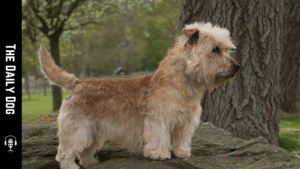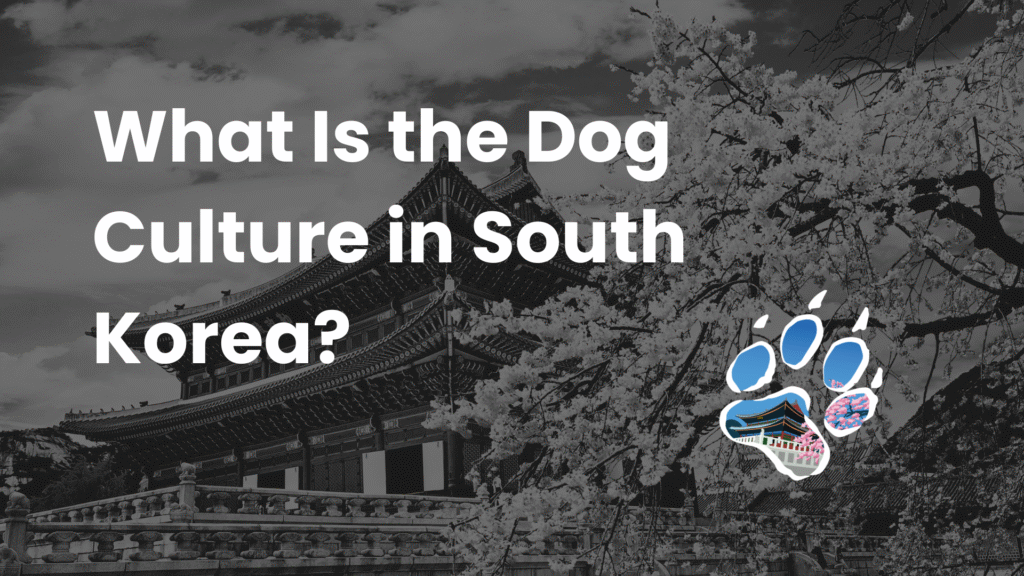South Korea is a country where tradition and modern life intersect in fascinating ways. From ancient palaces standing alongside glass skyscrapers, to K-pop idols shaping global fashion trends, Korea is known for blending heritage with innovation. This cultural duality extends to the country’s relationship with dogs.
In the past few decades, South Korea has undergone a dramatic transformation in how it views and treats dogs. Once considered primarily as working animals or even sources of food, dogs are now beloved family members, fashion icons, and symbols of status.
At Alaska Dog Works, and now through our expansion into Seoul Dog Works, we’ve been studying and engaging with this transformation firsthand. As dog trainers who specialize in helping families integrate canine companions into everyday life, we believe South Korea offers one of the most unique and evolving dog cultures in the world.
Let’s dive into what defines dog culture in South Korea today, from breed preferences and pet cafés to challenges and opportunities for the future.
A Rapid Transformation: From Utility to Companionship
Traditionally, dogs in Korea were valued for practical reasons, guarding homes, assisting with hunting, and living in rural areas. Breeds like the Korean Jindo emerged from this history, known for their loyalty, independence, and protective instincts.
But as Korea urbanized, especially during the economic boom of the late 20th century, the role of dogs shifted. In cities like Seoul and Busan, families began to view dogs less as workers and more as companions. This mirrored the global trend of the “pet humanization movement,” where dogs became members of the family.
Today, it’s common to hear Koreans refer to themselves as their dog’s “mom” or “dad,” a reflection of the deep emotional connection that has developed between people and pets.
Small Breeds Dominate the Scene
One of the most defining aspects of Korea’s dog culture is the preference for small breeds.
Why Small Dogs Are Popular
Apartment Living: With more than 80% of South Koreans living in apartments, smaller breeds like the Maltese, Toy Poodle, Shih Tzu, and Pomeranian are simply more practical.
Portability: Small dogs can easily accompany their owners in carriers, strollers, or even handbags, important in a country where mobility and convenience are highly valued.
Pet-Friendly Establishments: Many dog cafés and urban parks cater primarily to smaller breeds, reinforcing their popularity.
Cultural Aesthetics: Small, fluffy dogs fit the cultural ideal of “aegyo” (cuteness), which is deeply woven into Korean fashion, entertainment, and lifestyle.
The Maltese in particular has become a national favorite, consistently ranking as the most popular breed in the country.
The Rise of Pet Cafés and Urban Dog Spaces
One of the most distinctive features of Korean dog culture is the dog café. Unlike in the U.S., where dog parks are the primary social spaces for pets, Korea has built an entire industry around cafés where dogs can play, socialize, and interact with humans.
Types of Dog Cafés
Bring-Your-Own-Dog Cafés: Owners can relax while their dogs play off-leash in indoor spaces designed for safety and fun.
Resident-Dog Cafés: These cafés have their own resident dogs that visitors can interact with, popular among people who don’t own pets but want the companionship experience.
These establishments aren’t just trendy, they’re a reflection of how integrated dogs have become in urban Korean life. For families who work long hours or live in small apartments, dog cafés offer valuable enrichment and socialization opportunities.
Grooming, Fashion, and the Aesthetic of Dogs
Dog grooming in Korea isn’t just about hygiene, it’s about style.
Grooming salons are abundant in every neighborhood, offering services that go beyond a simple trim. Teddy-bear cuts, colorful dye jobs, and even seasonal outfits are common. Dogs are often dressed in coordinated clothing with their owners, blurring the line between pet and fashion accessory.
In Korea, a well-groomed dog is seen as a reflection of the owner’s care, style, and social standing. This has driven a booming pet fashion industry, with boutiques selling everything from designer collars to winter coats.
Challenges in Korean Dog Culture
While South Korea’s dog culture has made enormous strides, it’s not without challenges.
Long Working Hours
Many Koreans work long hours, sometimes 50–60 hours a week. This leaves limited time for dog care, leading to issues such as separation anxiety, lack of exercise, and behavioral problems.
Training Gaps
Obedience training is less common in Korea than in Western countries. Without proper guidance, small breeds may develop habits like excessive barking, resource guarding, or house training difficulties.
This is one reason we created Seoul Dog Works, to bring Alaska Dog Works’ expertise in real-time coaching and handler education to Korean families who want to raise well-mannered, happy dogs.
Stray and Abandoned Dogs
Despite growing acceptance of pets as family members, Korea still struggles with abandonment. Rescue organizations like Rebel Rescue (with whom we partner) are working to provide training and support for adopted dogs, many of whom are small-breed mixes or Jindos.
Cultural Taboos
Although attitudes have shifted dramatically, some older generations still view dogs primarily as outdoor animals or working creatures. Bridging the generational gap in attitudes remains a cultural challenge.
The Jindo: A Cultural Icon
No discussion of Korean dog culture is complete without mentioning the Jindo, Korea’s national breed.
The Jindo is celebrated for its loyalty, bravery, and hunting ability. Stories of Jindos traveling hundreds of kilometers to reunite with their families have become part of national lore.
While the Maltese may be the most common household pet today, the Jindo remains a symbol of Korean pride and heritage. Statues, festivals, and cultural references honor the breed, especially on Jindo Island itself.
At Alaska Dog Works, we see parallels between Korea’s Jindo and Alaska’s sled dogs. Both breeds represent the survival, resilience, and deep partnership between humans and dogs in their respective environments.
Military Families and Dog Ownership in Korea
A unique element of dog culture in South Korea is the influence of military families, particularly American service members stationed in the country.
Many U.S. families bring their dogs with them when relocating to Korea. This creates a cultural exchange where larger breeds, like Labradors, German Shepherds, or Golden Retrievers, become more visible in neighborhoods near bases.
However, moving abroad with dogs presents challenges: airline restrictions, quarantine inspections, and adapting to Korean pet culture. That’s why programs like Seoul Dog Works offer support for military families, with training, coaching, and community resources designed for smooth transitions.
The Business of Dogs: A Growing Industry
South Korea’s dog culture has also become big business.
Pet Cafés and Daycares: A thriving service industry caters to urban dog owners.
Grooming and Fashion: Pet grooming chains and fashion boutiques are booming.
Veterinary Care: Korea has high-quality veterinary services, especially in cities, though language barriers can be a challenge for expats.
Training and Education: Growing demand for structured training programs is opening new opportunities, exactly where Alaska Dog Works and Seoul Dog Works are stepping in.
Industry analysts project the Korean pet market to grow steadily, reflecting the country’s increasing commitment to animal welfare and pet-friendly lifestyles.
How Seoul Dog Works Fits Into Korean Dog Culture
At Seoul Dog Works, we’re not here to impose American-style training on Korean families. Instead, we’re building programs that respect and adapt to Korean culture while offering the proven structure of Alaska Dog Works’ membership-based model.
Through our Pack™ Membership, Korean families gain access to:
Real-time coaching via live video, including sessions timed for Korea.
Quarterly in-person visits for mini-group and one-on-one training.
Behavioral support for issues common in small-breed households, such as barking, separation anxiety, or housebreaking.
Community connections, linking dog owners across Korea and internationally.
We’re also proud to partner with Rebel Rescue to provide training for adopted dogs, ensuring they integrate successfully into their forever homes.
The Future of Dog Culture in Korea
Looking ahead, several trends are likely to shape Korean dog culture:
Greater Acceptance of Larger Breeds: As more families explore outdoor lifestyles and suburban living, larger breeds may become more common.
Expansion of Pet-Friendly Spaces: Parks, hotels, and even workplaces are becoming more accommodating of dogs.
Increased Focus on Training: As owners recognize the importance of well-mannered dogs in urban environments, professional training services will grow in demand.
Generational Shifts: Younger Koreans overwhelmingly see dogs as family members, a perspective that will continue to reshape cultural norms.
In Closing…
So, what is the dog culture in South Korea? It’s a culture in motion, rooted in history, shaped by urban living, and increasingly influenced by global trends. From the national pride of the Jindo to the urban popularity of the Maltese, Korean dog culture reflects the nation’s unique blend of tradition and modernity.
At Alaska Dog Works and Seoul Dog Works, we’re honored to be part of this evolving story. By offering structured training, ongoing coaching, and community support, we help families, whether in Alaska or Seoul, build stronger bonds with their dogs.
Interested in learning more? Schedule a strategy call today and discover how we can help you and your dog thrive in Korea’s dynamic dog culture.
We offer a FREE Strategy Call.
Click on the graphic to learn more
Read More


What Questions Can I Ask a Person About Their Service Dog?








